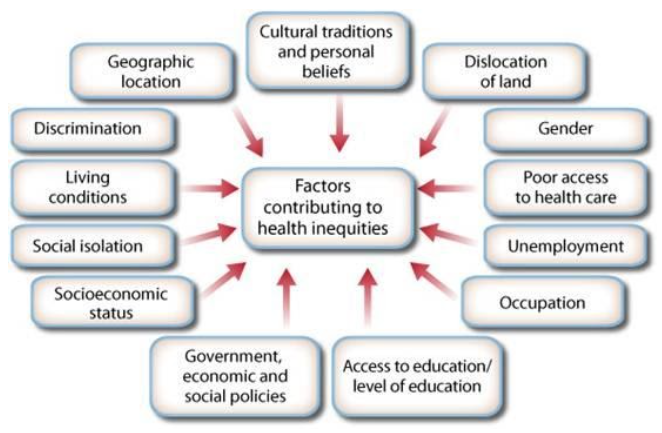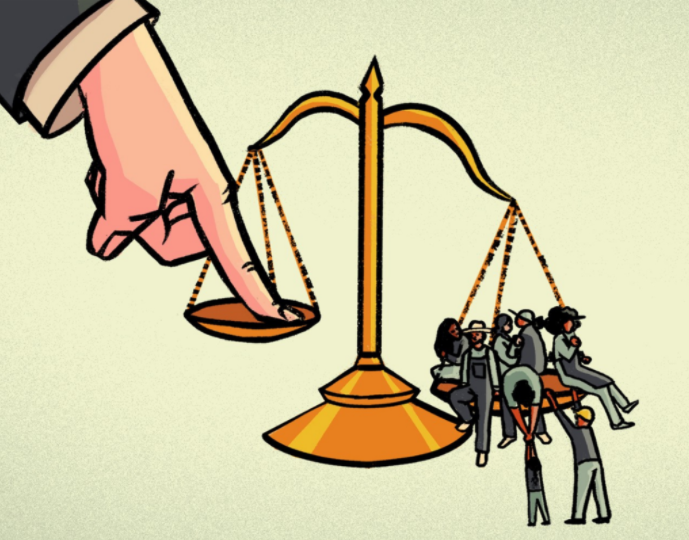
Well I guess it goes back to one of my other blogs, is cancer a gift. You all know how I feel about that. It is certainly not! But for the purpose for this blog, let’s pretend it is gifted, delivered, sent down or just caught! Unfortunately, it is not gifted equally. Meaning that there are huge disparities and inequities in those who receive cancer. Disparities are divided between the number of new cancer patients and their outcomes in certain populations. This includes older people (that’s me now), poorer socioeconomic folks, racial, ethnic, and gender minorities (LGBT+). So, you are now asking, how and why is this happening, and how do we fix this?
Who is affected the most of these groups?
“Black, American Indian, and Alaska Native communities experience the worst cancer health disparities among racial/ethnic groups in the U.S.” These groups have the greatest number of cases and suffer the worst outcomes despite the efforts put forth today on trying to reduce these statistics. Here are the plain old stats for this from the 2019 report from: American Cancer Society — Cancer Facts & Figures.
- 39 out of every 100 men and 38 out of every 100 women will get cancer.
- 60% more black men get prostate cancer than other races, and die twice as often as white men.
- 55% cancer diagnosis are over the age of 55.
- 5-year survival rates are 70% in white population while 63% of African Americans.
- Insurance rates are not equal, with Hispanics insured at 16%, Blacks insured at 11% & whites without insurance is only 6%.
- 5% of cancer in men and 11 % cancer in women are attributed to being overweight.
- Obesity presence in men was highest in 43% Hispanics, followed by Non-Hispanic Whites at 38%, and non-Hispanic Blacks at 37%.
- Obesity prevalence in women is highest among non-Hispanic Blacks, 55%, followed by Hispanic Whites at 51% and non-Hispanic Whites at 38%.
- 5% of cancer deaths and causes are attributed to dietary factors and 6% of cancer cases are attributed to alcohol consumption.
- Risk factors in low socioeconomic areas of the US have greater alcohol consumption and poor dietary habits.
- People with lower socioeconomic status (SES) have higher cancer death rates than those with higher SES, regardless of demographic factors such as race/ethnicity.
- “Cancer mortality rates among both black and non-Hispanic white (NHW) men with 12 or fewer years of education are almost 3 times higher than those of college graduates for all cancers combined.”
- Non detection is one of the reasons for highest mortality rates. People with lower SES tend to get less pre cancer screening and do not always seek out necessary preventative care.
- 21% of blacks and 18% of Hispanics/Latinos lived below the poverty line, compared to 9% of NHWs and 10% of Asians. In addition, 11% of blacks and 16% of Hispanics/Latinos were uninsured, compared to 6% of NHWs and 7% of Asians.
- 30% of all cancer deaths involve patients that smoke. 1 in 3 SGM people smoke.
Now for the facts and figures that face the Sexual Gender & Minority population:
“Stress, discrimination, lack of access to health care, social isolation, transphobia, homophobia and criminalization come into play with Cancer care. The LBTGQ+ community must deal with most of these and usually all at once. Each year approximately 250,000 people receive their cancer diagnoses at one of the NCI-designated cancer centers, projections show at least 11,250 of these people are likely SGM. It is estimated that 4.5% of the United States Population is SGM and despite federal funding, there is no federal encouragement to make these cancer centers SGM welcoming. In fact, recent research shows over 40% of these state of the art cancer centers do not even list gender identity and expression as protected classes in their non-discrimination statements and/or patient bill of rights.
So how do we fix all of this?
We can start by advocating policy changes within our government and the National Cancer Institute. “Increasingly, federal, state, and regional policies affect the ability of LGBTQI+ a.k.a. sexual and gender minority (SGM) persons to minimize cancer risks, obtain adequate treatment, and maximize survivorship. In consideration, the National LGBT Cancer Network is debuting a set of policy priorities, actions which can minimize the impact of cancer on this NIH acknowledged health disparity population.”
We need to educate all communities on the at-risk population. Then target communities with pre-screening and preventative care. Early detection is key! We also need to make sure THE NCI is changing their policies on how civil rights are protected under all publicly health funded institutions. We need to work on child and adult obesity right flipping now! People in lower SES need access to better food, and nutrition.
Then we need to ensure that all care is welcoming and non-discriminative. Next making sure all federally funded research includes all populations. Lastly, we need to make sure there are new programs counteracting “all tobacco smoking”. This affects all populations.
If we work together, projecting advocacy for everyone, we stand a chance of slowing this dreadful disease of cancer. I know this has not been my normal funny blog. Apologies. But this is something that I worry about ever since I received that ugly diagnosis. I am one of the lucky ones. I have a wonderful family, friends, and career. I also have fantastic healthcare. Truly so blessed. I recently added the LBGTQ+ Cancer network to On a Serious Note in the blog. It has some terrific webinars on health justice and inequities. Take a listen.
So, from now on, just put down the smokes doll! Get rid of that cotton candy vape. Eat a carrot or an apple. Go outside and try a walk. If all else fails, try a wee dram of whiskey or bourbon if you need an occasional vice. It’s most likely not any better, but you can stop over at the Bat bar in our den for a free trial.
Until the next time, find something funny to share. I promise my next blog will go back to the humorous side of cancer.
Best,
Cathy

